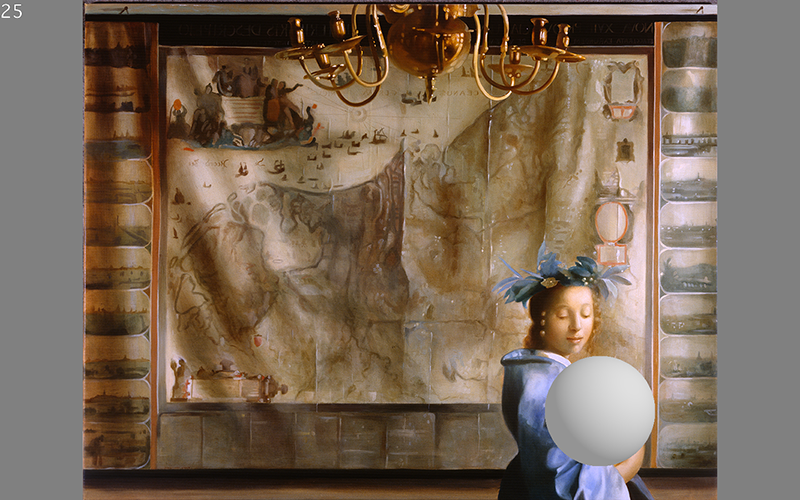You are here
The visual light field in paintings of Museum Prinsenhof: comparing settings in empty space and on objects
The aim of this study was to investigate whether inferences of light in the empty space of a painting and on objects in that painting are congruent with each other. We conducted an experiment in which we tested the perception of light qualities (direction, intensity of directed and ambient components) for two conditions: a) for a position in empty space in a painting and b) on the convex object that was replaced by the probe in the first condition. We found that the consistency of directional settings both between conditions and within paintings is highly dependent on painting content, specifically on the number of qualitatively different light zones in a scene. For uniform lighting observers are very consistent, but when there are two or more light zones present in a painting the individual differences become prominent. We discuss several possible explanations of such results, the most plausible of which is that human observers are blind to complex features of a light field.

